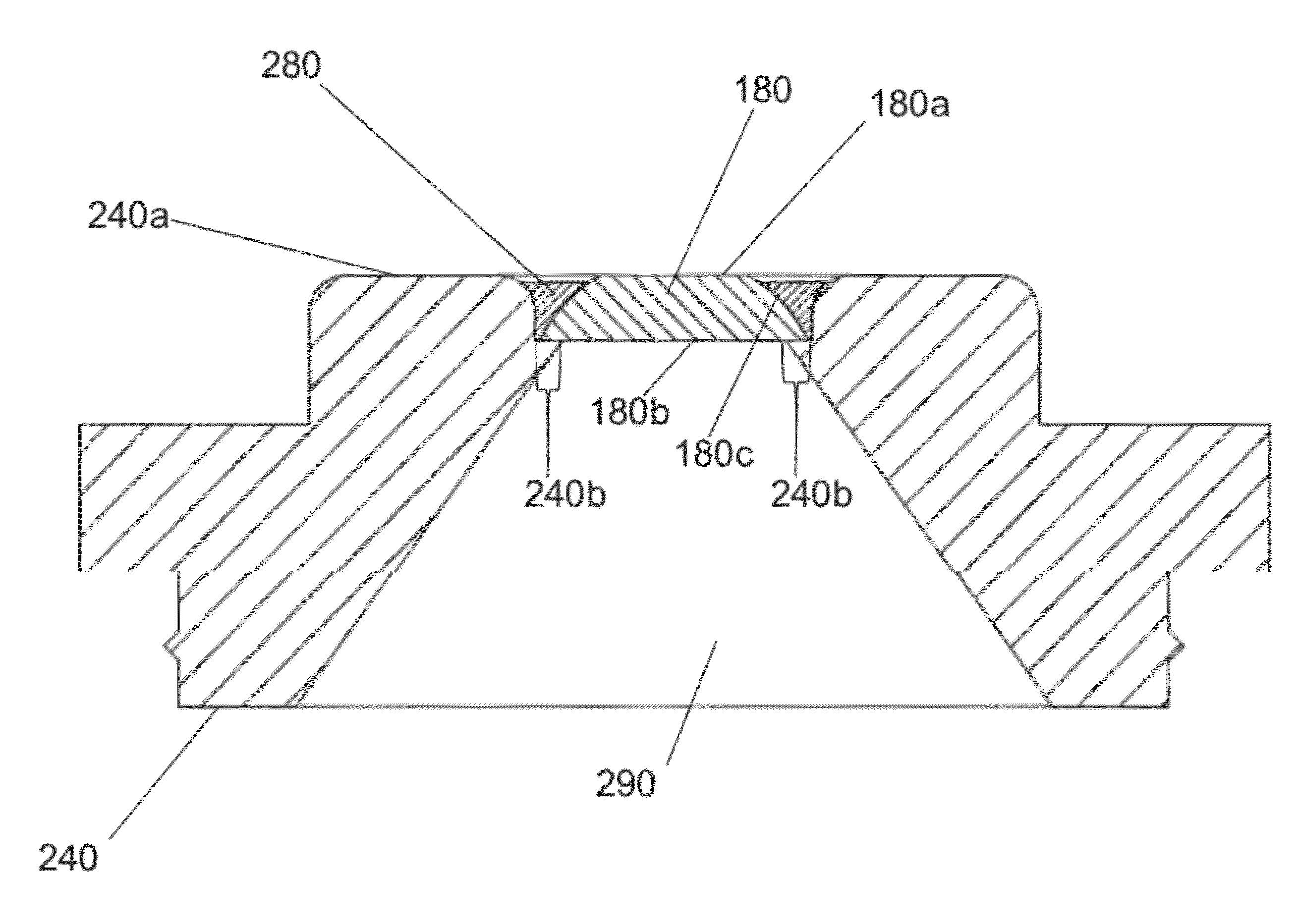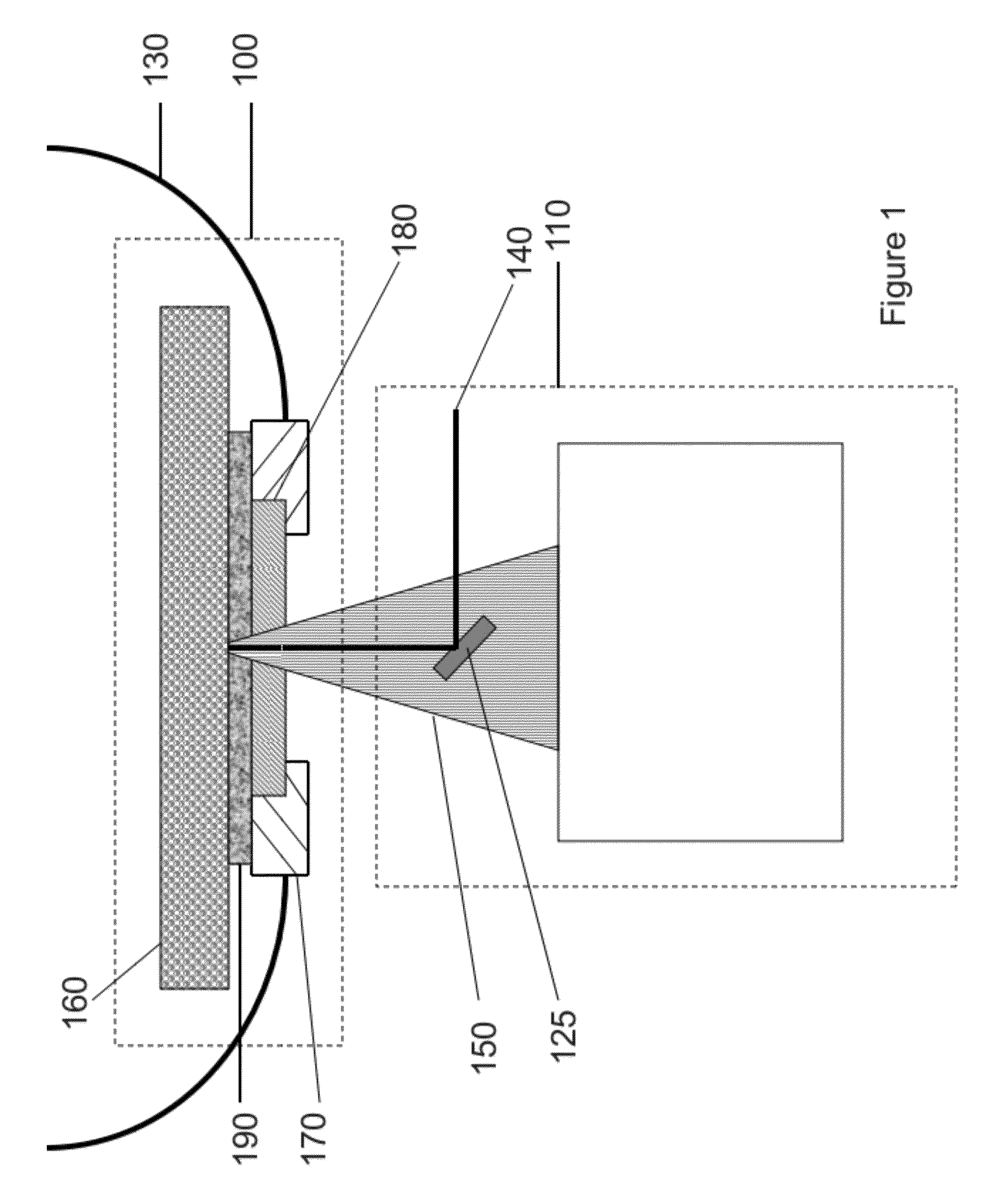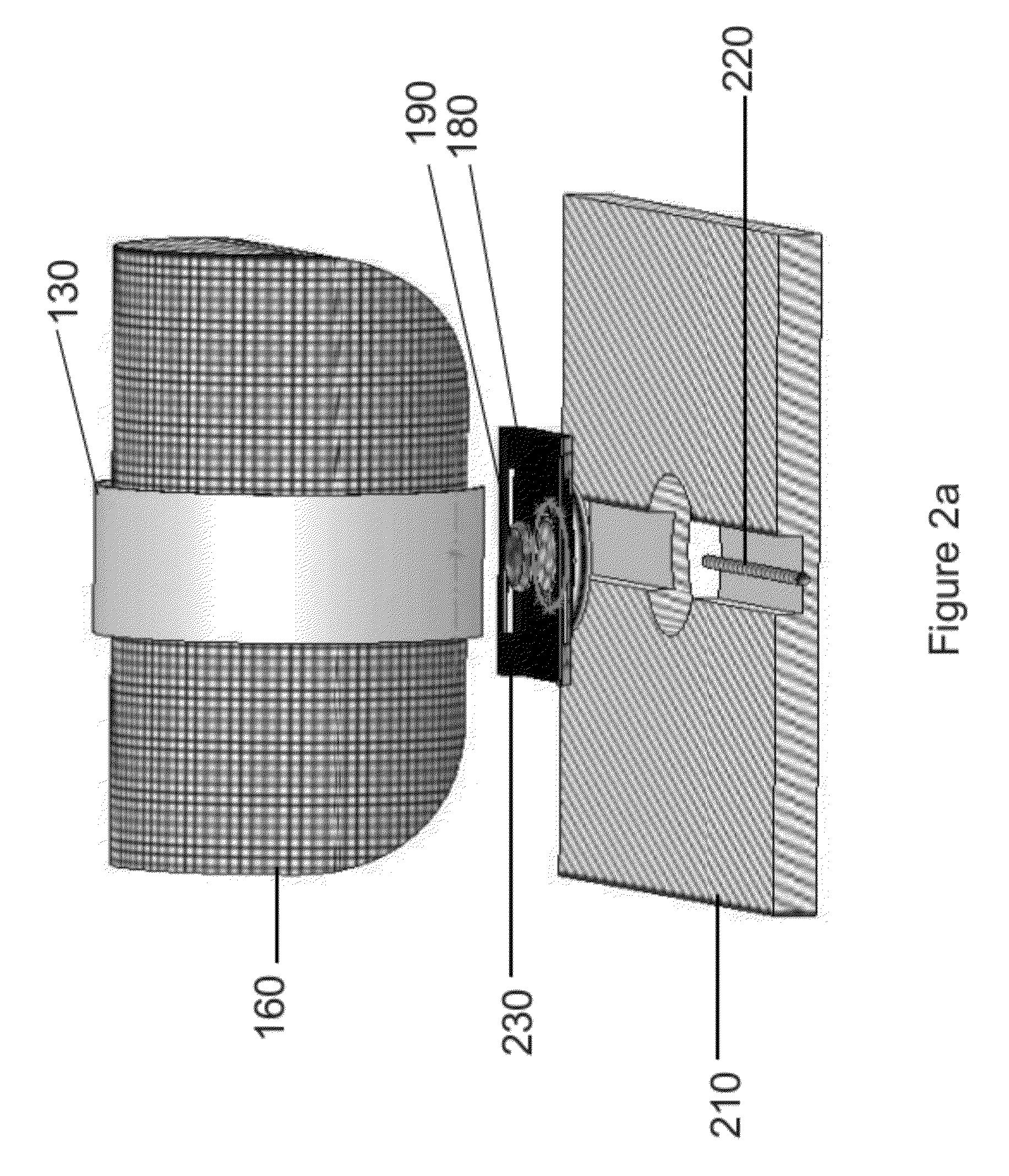Apparatus for Stabilizing Mechanical, Thermal, and Optical Properties and for Reducing the Fluorescence of Biological Samples for Optical Evaluation
a biological sample and optical evaluation technology, applied in the field of optical evaluation, can solve the problems of difficult to obtain a calibration for the analyte concentration from multiple sites, interfere with the measurement, and local burn to the skin of the subject, and achieve the effect of substantially reducing the unwanted fluorescence of targeted fluorophores
- Summary
- Abstract
- Description
- Claims
- Application Information
AI Technical Summary
Benefits of technology
Problems solved by technology
Method used
Image
Examples
Embodiment Construction
[0033]FIG. 1 is a cross-section diagram of the apparatus, in accordance with an embodiment. The apparatus is comprised of the sample apparatus 100, which includes a strap 130 disposed on either side to secure the sample apparatus 100 to the test subject or sample 160, and the spectroscopic and / or imaging system 110. The spectroscopic and / or imaging system 110 comprises the light excitation beam 140 which arises from a source within the spectroscopic and / or imaging system 110, a mirror 125 that is one means of introducing the beam 140 to the sample 160, and appropriate collection optics (not shown) to capture and guide the scattered radiation 150 from the sample 160 that passes from the sample apparatus 100 to the spectroscopic and / or imaging system 110. The excitation beam 140 passes between the spectroscopic and / or imaging system 110 and the sample apparatus 100. In FIG. 1, the sample apparatus 100 is comprised of an optical window 180 and frame 170 which retains the optical window...
PUM
| Property | Measurement | Unit |
|---|---|---|
| wavelength | aaaaa | aaaaa |
| detected wavelength | aaaaa | aaaaa |
| wavelengths | aaaaa | aaaaa |
Abstract
Description
Claims
Application Information
 Login to View More
Login to View More - R&D
- Intellectual Property
- Life Sciences
- Materials
- Tech Scout
- Unparalleled Data Quality
- Higher Quality Content
- 60% Fewer Hallucinations
Browse by: Latest US Patents, China's latest patents, Technical Efficacy Thesaurus, Application Domain, Technology Topic, Popular Technical Reports.
© 2025 PatSnap. All rights reserved.Legal|Privacy policy|Modern Slavery Act Transparency Statement|Sitemap|About US| Contact US: help@patsnap.com



